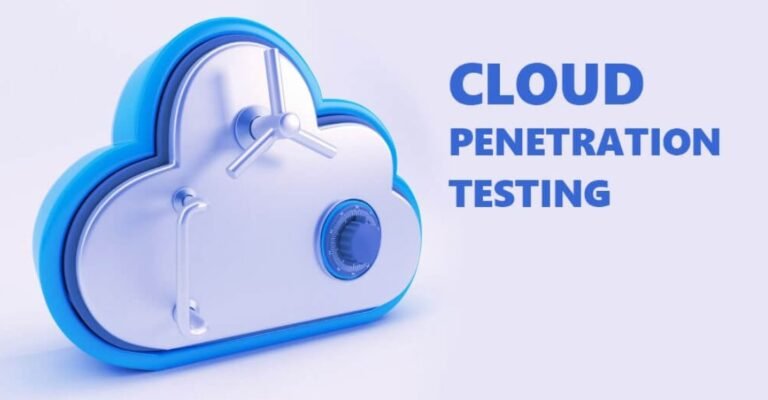Why is Authority to Operate Important? Complete Guide

The convenience of technology comes with the challenge of securing information and protecting it from cyber threats. That’s where the concept of Authority to Operate (ATO) comes into play. ATO is a critical component of any organization’s cybersecurity framework, particularly for those dealing with sensitive or classified information. But what exactly is ATO, and why is it so important?
Understanding Authority to Operate (ATO)
Authority to Operate (ATO) is a security authorization granted by an agency or organization that allows an information system to operate within a specific environment. In other words, it is a formal approval that certifies an information system meets specific security requirements and that it is safe to operate in a particular environment. The granting of an ATO is typically based on a comprehensive assessment of an organization’s security controls and risk management strategies.
ATO is a crucial element of a comprehensive cybersecurity framework. Organizations that handle sensitive or classified information must have an ATO to ensure that their information systems are secure and that they comply with various laws and regulations. For example, the Federal Information Security Modernization Act (FISMA) requires all federal agencies to obtain an ATO before operating any information system. Similarly, many private organizations also require an ATO before operating in certain environments.
The ATO process involves a rigorous assessment of an organization’s security controls to ensure that they meet specific requirements. The ATO process may vary depending on the type of organization and the environment in which it operates. However, the process typically involves a comprehensive evaluation of an organization’s security posture, including its policies, procedures, and technical controls.
Importance of ATO in Government and Private Sectors
ATO is essential in both the government and private sectors. In the government sector, agencies must obtain an ATO before operating any information system. This requirement is essential to ensure that sensitive and classified information is adequately protected from cyber threats. The ATO process involves a comprehensive evaluation of an agency’s security posture, including its policies, procedures, and technical controls. This evaluation ensures that the agency’s information systems are secure and compliant with various laws and regulations.
In the private sector, ATO is also critical, particularly for organizations that handle sensitive or classified information. For example, companies that work with the Department of Defense or other federal agencies must obtain an ATO before operating any information system. Similarly, private organizations that operate in highly regulated industries, such as healthcare and finance, may require an ATO to meet specific compliance requirements.
ATO Requirements and Compliance
ATO requirements vary depending on the type of organization and the environment in which it operates. However, most ATO requirements are based on various laws, regulations, and industry standards. For example, federal agencies must comply with FISMA, which requires agencies to implement specific security controls to protect their information systems.
In addition to complying with specific laws and regulations, organizations must also implement various security controls to obtain an ATO. These controls may include technical controls, such as firewalls, intrusion detection systems, and encryption, as well as administrative controls, such as policies and procedures.
Steps to Obtaining an ATO
The ATO process typically involves several steps, including the following:
- Preparation: This step involves identifying the information system that requires an ATO and preparing the necessary documentation, such as policies, procedures, and risk management plans.
- Assessment: This step involves a comprehensive evaluation of an organization’s security controls to ensure that they meet specific requirements. The assessment may include vulnerability scans, penetration testing, and other security testing.
- Remediation: If any security vulnerabilities are identified during the assessment, the organization must remediate them before proceeding with the ATO process.
- Authorization: Once the assessment is complete, and all security vulnerabilities have been remediated, the organization can submit its ATO application for authorization.
- Monitoring and Maintenance: After obtaining an ATO, organizations must regularly monitor their information systems to ensure that they continue to meet specific security requirements. This process involves ongoing vulnerability scanning, penetration testing, and other security testing to identify and remediate any security vulnerabilities.
ATO Process and Timeline
The ATO process can be time-consuming and complex, depending on the type of organization and the environment in which it operates. The timeline for obtaining an ATO may vary, but it typically takes several months to complete. The timeframe may be longer if significant security vulnerabilities are identified during the assessment or if the organization operates in a highly regulated environment.
Security Controls for ATO
To obtain an ATO, organizations must implement various security controls to protect their information systems. These controls may include technical controls, such as firewalls, intrusion detection systems, and encryption, as well as administrative controls, such as policies and procedures.
The specific security controls required for an ATO may vary depending on the type of organization and the environment in which it operates. However, most ATO requirements are based on various laws, regulations, and industry standards, such as FISMA, HIPAA, and PCI DSS.
Maintaining ATO and Reauthorization
After obtaining an ATO, organizations must regularly monitor their information systems to ensure that they continue to meet specific security requirements. This process involves ongoing vulnerability scanning, penetration testing, and other security testing to identify and remediate any security vulnerabilities.
Organizations must also obtain reauthorization for their ATO periodically. The frequency of reauthorization depends on the type of organization and the environment in which it operates. For example, federal agencies must obtain reauthorization for their ATO every three years.
Do Read: 10.0.0.0.1 Piso wifi login Portal in 2023
Risks of Operating without ATO
Operating without an ATO can pose significant risks to an organization’s information security posture. Without an ATO, organizations may not have implemented the necessary security controls to protect their information systems adequately. As a result, they may be vulnerable to cyber threats, such as data breaches and cyber-attacks.
In addition to the risk of cyber threats, operating without an ATO can also lead to legal and regulatory compliance issues. Many laws and regulations require organizations to implement specific security controls to protect their information systems. Failure to comply with these requirements can result in significant fines and legal liabilities.
Benefits of having ATO
Obtaining an ATO has several benefits for organizations, including the following:
- Improved Security: ATO requires organizations to implement various security controls to protect their information systems, which can improve their overall security posture.
- Compliance: ATO helps organizations comply with various laws, regulations, and industry standards, such as FISMA, HIPAA, and PCI DSS.
- Risk Management: ATO helps organizations identify and manage cybersecurity risks, which can help prevent data breaches and other cyber threats.
- Competitive Advantage: Having an ATO can give organizations a competitive advantage, particularly when working with government agencies or highly regulated industries.
Conclusion
In conclusion, ATO is a critical component of any organization’s cybersecurity framework, particularly for those handling sensitive or classified information. Obtaining an ATO involves a rigorous assessment of an organization’s security controls to ensure that they meet specific requirements.
The ATO process can be time-consuming and complex, but the benefits of having an ATO are significant, including improved security, compliance, risk management, and competitive advantage. Organizations that operate without an ATO may face significant risks, including cyber threats and legal and regulatory compliance issues. Therefore, it is essential to obtain an ATO to protect your organization’s information systems and ensure compliance with various laws and regulations.






